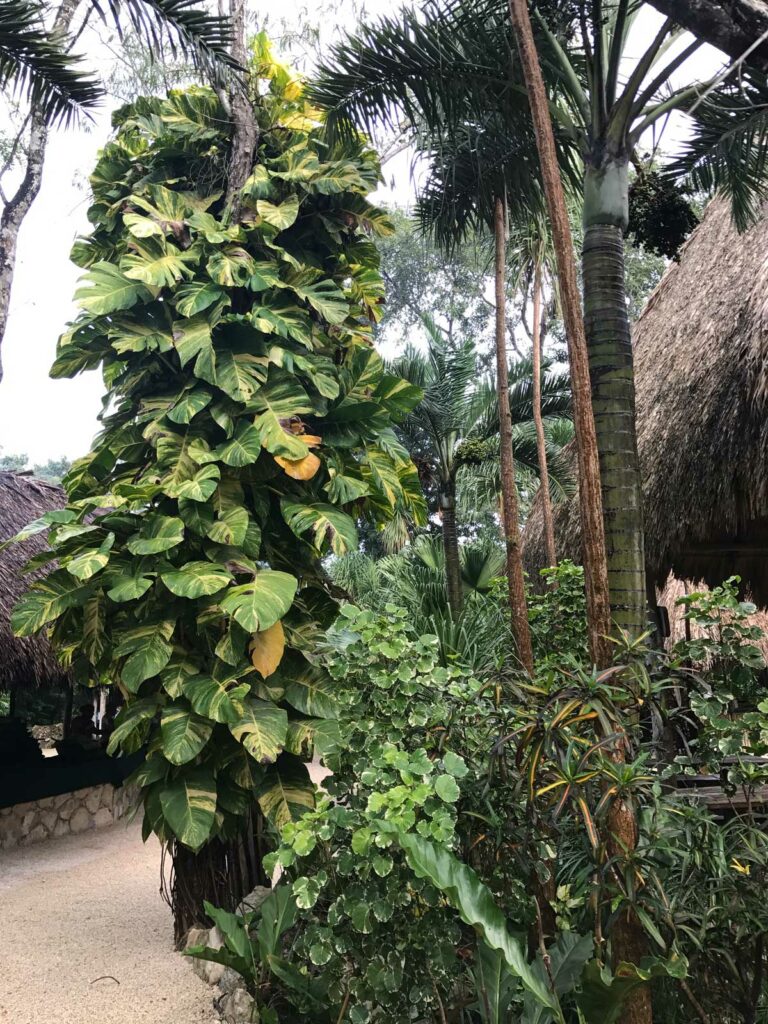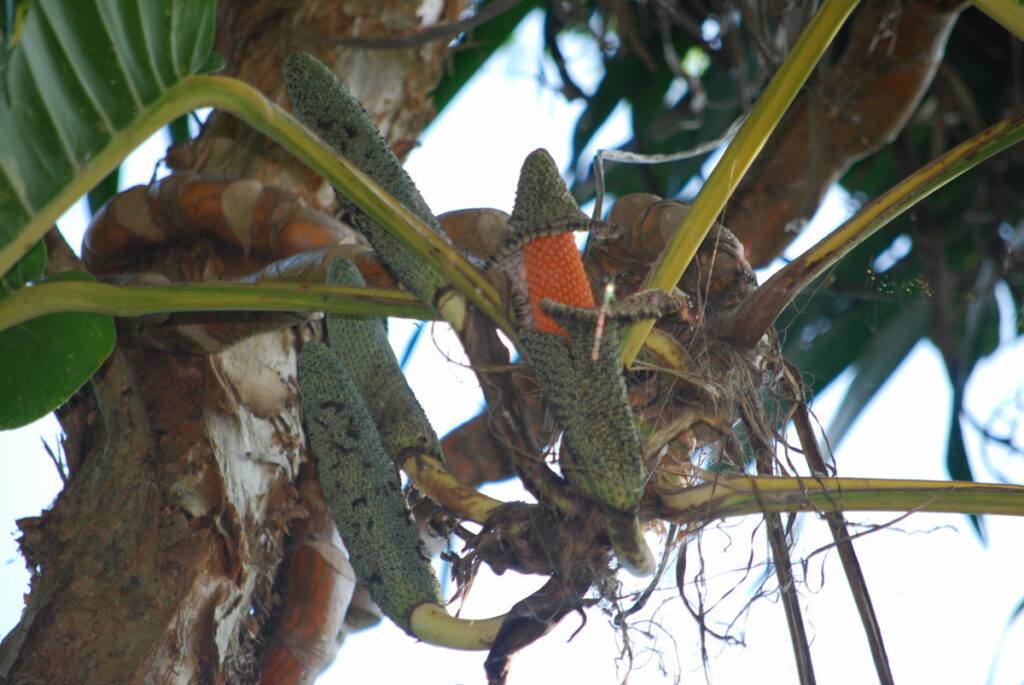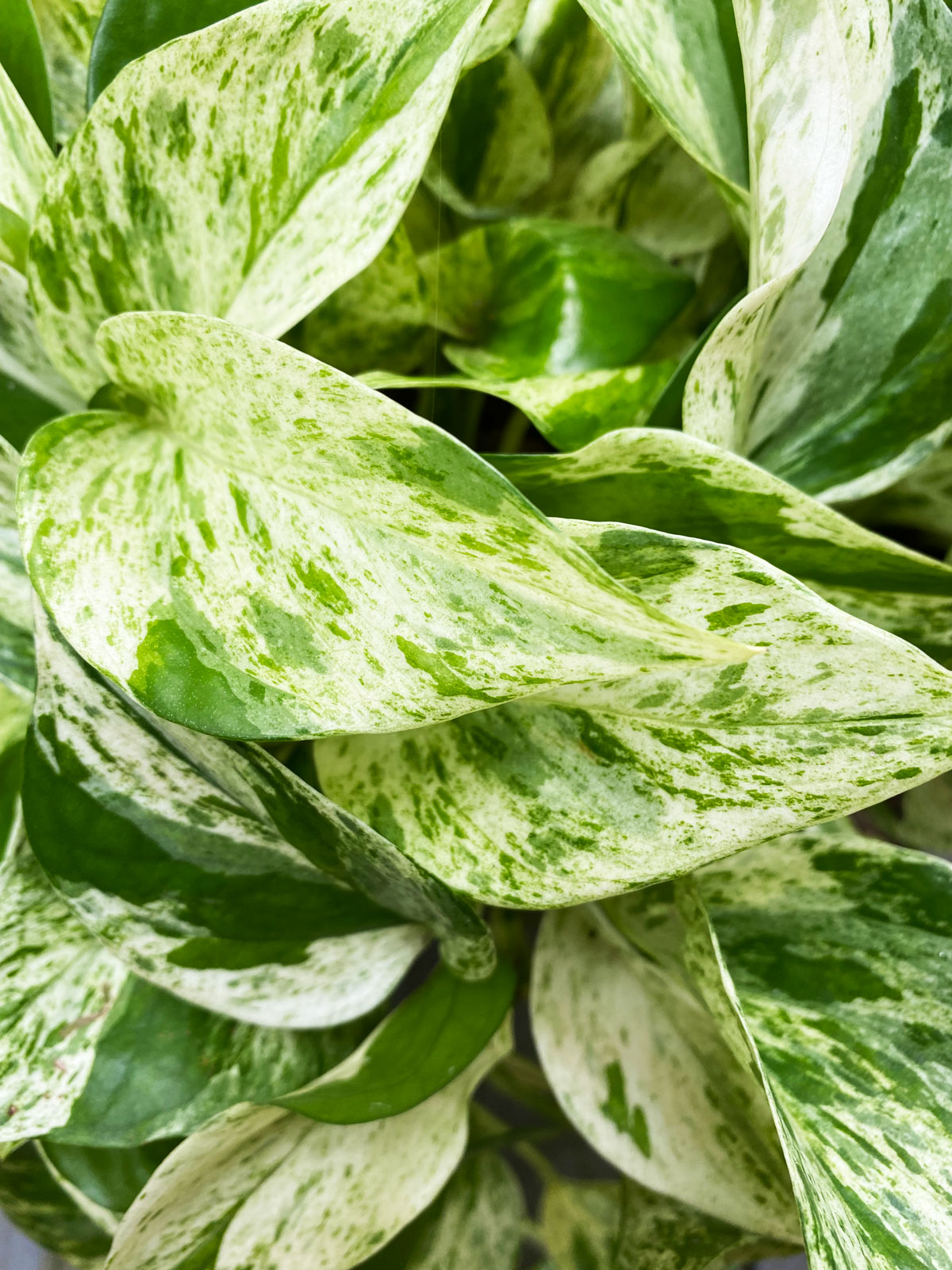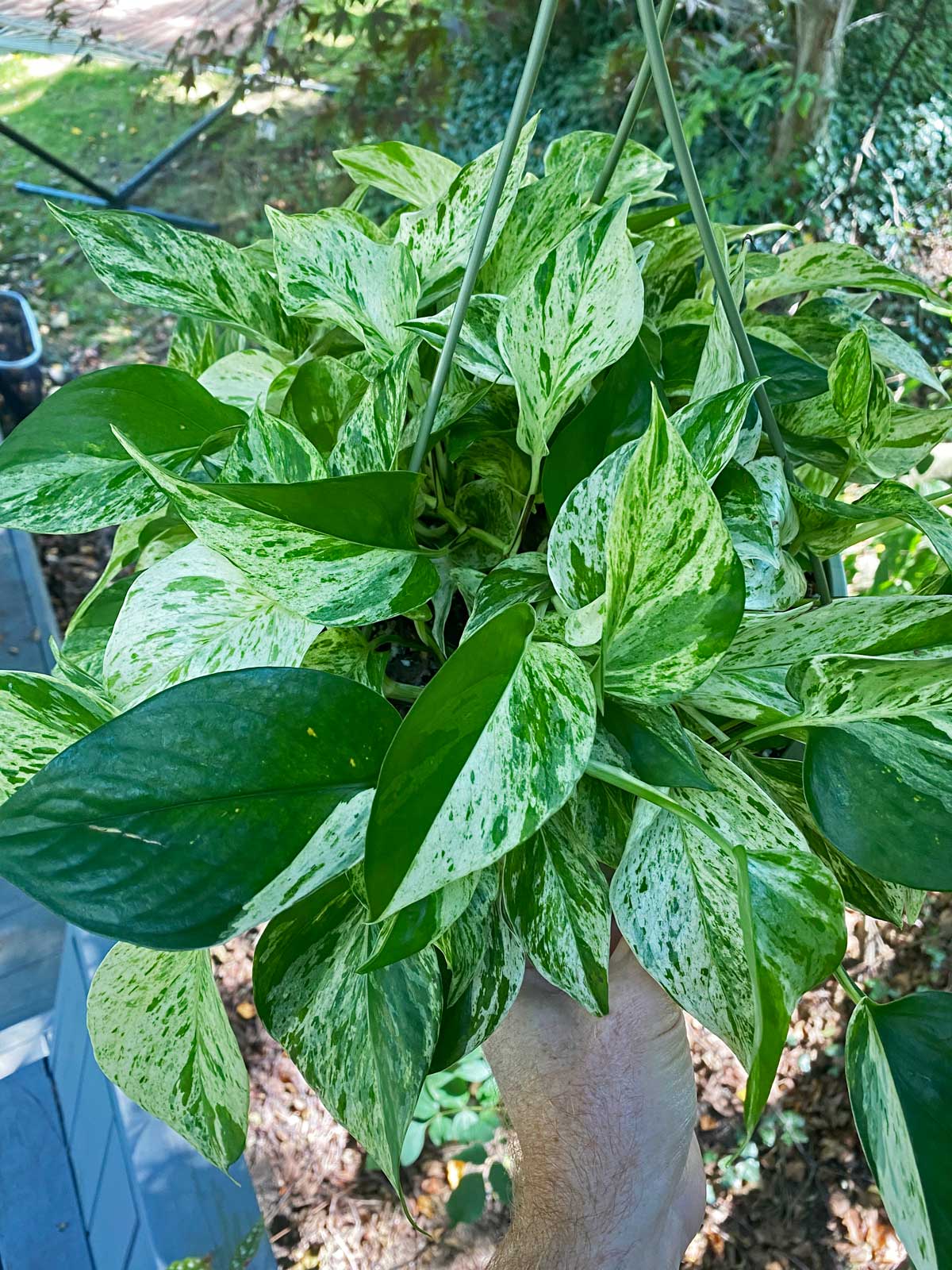Some of the links in this post may be affiliate links.
One of the most beloved “houseplants” ever, Pothos (or Epipremnum aureum) is almost indistinguishable in the wild versus the plants that we grow in our homes. Keep reading to learn all about pothos in the wild in this informative post, and I’ll show you some gorgeous pothos specimens from my own travels around the world.

Table of Contents
POTHOS IN THE WILD
1. WHERE DO POTHOS GROW IN THE WILD?
Epipremnum aureum, commonly known as Pothos, is native to the Society Islands in the south Pacific Ocean and is a climber in nature.
It’s hard to see the green areas on the map below that show the native range since the range is so small in scope. But in purple, you can see where pothos has become introduced and has naturalized around the world.

In many of my travels to subtropical and tropical areas around the world, I’ve seen pothos in the wild grow spectacularly. If you’re like me and don’t live in a warm climate, it’s always a treat to see “houseplants” in the wild.
Here is one that I saw in St. Thomas and couldn’t help but snap a photo of myself to show the scale of the leaves.

2. ARE POTHOS INVASIVE?
Yes, and this is probably part of the reason why they are such sturdy houseplants! When grown outdoors in the ground in warm climates, they can be very invasive and will spread and choke out native plants.
In an effort to keep your outdoor pothos in bounds, it is probably best to keep it as a houseplant in order to help preserve native plants and biodiversity in your location.

They are climbers in nature, and often times, Pothos will overtake native trees and can eventually kill the tree if left unchecked.
Here is a gorgeous pothos that I saw in Mexico, growing up a palm tree. This type of situation would require some pruning so that it doesn’t completely overtake the palm tree.

3. HOW BIG DO POTHOS GET IN THE WILD?
They can easily get 40 feet or more in length, growing as both a ground cover and up trees. Once their roots attach onto a tree and the plant starts climbing, the leaves will be able to reach maturity.
As it climbs, the leaves will get bigger and bigger and develop fenestrations (holes and slits). Leaves can grow over 2 feet long.
When grown as a ground cover without attaching onto anything, the small, juvenile leaves prevail and they will resemble the common pothos that we grow indoors in hanging baskets or as trailing plants.

4. DO POTHOS BLOOM IN THE WILD?
Yes they do, but even in the wild, it is considered a “shy-flowering” plant due to a gibberellin (GA) biosynthetic gene, EaGA30x1, deficiency in the Epripremnum aureum species.
Gibberellin is a hormone that triggers flowering.
Flowering, however, can be artificially induced by spraying GAs onto the plant.
The pothos flower itself is characteristic of any aroid and contains a spathe and spadix. Technically, this whole structure is called the inflorescence, and the actual flowers themselves are tiny and found on the spadix.

5. HOW DOES POTHOS REPRODUCE IN THE WILD?
In the wild, pothos will usually just reproduce by vegetative propagation, or simply just spread as a result of its vining nature.
VEGETATIVE PROPAGATION
Similar to how we would propagate pothos at home, if a vine breaks and lands on soil or even on a tree, it will start to grow into a new plant.
Although flowering is very rare in cultivation, and even in the wild, it can flower and even fruit outdoors. Here is one instance below.
It looks similar to Monstera deliciosa fruit, but pothos fruit is reportedly not edible. (And even Monstera deliciosa fruit must be ripe before eating and is inedible in its unripe form).

Photo Credit: DixiePines, CC BY-SA 4.0
POTHOS SEEDS
Given the low propensity of pothos plants to flower in the first place, any listings that you may see online for pothos seeds on Etsy, eBay, and other sites are probably a scam, so buyers beware!
Plus, since it is so easy to propagate Pothos with cuttings, trying to grow these plants from seed wouldn’t make much sense to begin with anyway.
Be sure not to miss my pothos varieties post to explore all the gorgeous pothos types out there that you can grow in your own home.
If you’re looking for an amazing potting mix that you can use straight out of the bag for your Pothos, check out the Tropical Climber Soil Blend from Oh Happy Plants. This is an amazing mix and you will get 10% off at checkout automatically if you use my link.
I hope you’ve enjoyed this post on pothos in the wild. Have you ever seen a pothos in the wild? Comment below. I’d love to hear!







Jude
Sunday 8th of December 2024
Raffaele, you mentioned the pothos fruiting and included a photo of it. You said it's not edible like the fruit of a Monstera delicious is (when fully ripe). I've read about the taste of its fruit and it's the reason "delicious" is part of its binomial name. My question - have you ever had a chance to taste this fruit where it grows naturally? If so, could you describe what it was like, and any similarities to a blend of other fruits, please? Degree of acidity and sweetness would be nice to know too. And don't worry that I'd try growing it hoping for fruit. 😄 I know it would never happen as a houseplant! Thank you. I'm going to look other other plants in your blog and may then decide to subscribe to your newsletter.
Raffaele Di Lallo
Monday 9th of December 2024
Hi Jude! I have a blog post all about Monstera deliciosa fruit. I describe everything there and I have not tasted it where it grows naturally. I tasted one that was grown in a greenhouse locally. Here is the Monstera deliciosa fruiting article. I hope you enjoy! https://www.ohiotropics.com/2021/11/01/monstera-deliciosa-fruit/
Jen
Friday 26th of April 2024
What a fantastic and fun article! Great photos. You have a wonderful blog and I am drawn to your love of plants; I can relate to that enthusiasm when observing my houseplants growing in the wild. When visiting a small town on the West coast of Puerto Rico, my daughters and I were blessed to enjoy an abandoned “jungle” growing behind a factory in between the sea and the street. The vigorous and old growth was so strong that the girls could climb and swing from vines. (We did obtain permission from the owner before we ventures into this area of wild growth.) This was our beloved world of fantasy where imagining tree houses and restaurants and doll houses became daily play. The habitat was amazing and so many creatures lived here too! Thank you for reminding me of some of my richest memories of delicious moments in life!
Raffaele Di Lallo
Friday 26th of April 2024
I'm so happy that you enjoyed the post and my blog! And what a wonderful memory in Puerto Rico. There is nothing like exploring a tropical paradise...
Thelma
Saturday 20th of April 2024
Thank you for the photos. I have loved pathos as a houseplants here in Ohio for 40yrs . A few years ago I saw one climbing up a tree in Florida and the size of the leaves left me in total "awe". Thank you also for saying how they could kill a tree of left unchecked....kind of like Trumpet Vine here. Beautiful yet very invasive. Thank you again....enjoyed your article.
Raffaele Di Lallo
Sunday 21st of April 2024
Glad you enjoyed the post Thelma!